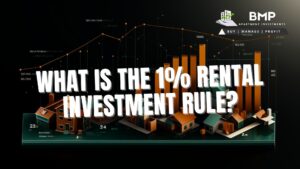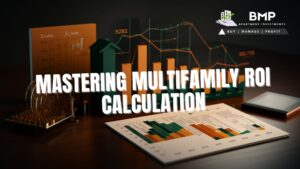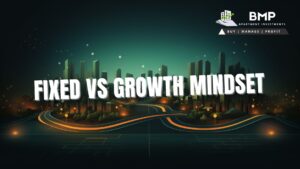When it comes to real estate investment, there are various strategies available, each with its own unique advantages and considerations. Two popular approaches that often come into the spotlight are multifamily investing and fix and flip investing. Both strategies can be lucrative, but they differ significantly in terms of long-term wealth creation, risk factors, and the overall approach to investing in the real estate market. In this article, we will delve into the world of multifamily investing and fix and flip investing, comparing their key aspects to determine which strategy emerges as the superior choice.
Multifamily Investing: Generating Wealth Through Cash Flow and Appreciation
Multifamily investing involves the acquisition and ownership of properties that consist of multiple units, such as apartment complexes or townhouses. This strategy offers several compelling advantages.
Steady Cash Flow and Passive Income Potential
One of the primary benefits of multifamily investing is the potential for consistent cash flow and passive income generation. By renting out multiple units within a single property, investors can establish a reliable stream of rental income. This stability provides a solid foundation for long-term financial success and the ability to reinvest in additional properties.
Diversification and Reduced Risk
Multifamily investing inherently provides built-in diversification. Owning multiple units within a single property allows investors to spread their risk across various tenants and income streams. Even if one unit becomes vacant or experiences temporary fluctuations in rental income, the overall cash flow remains relatively stable. This diversification serves as a buffer against market volatility and mitigates risks associated with relying on a single property for income.
Economies of Scale and Professional Property Management
Managing multiple units within a multifamily property offers significant economies of scale. Investors can benefit from shared maintenance costs, streamlined property management, and reduced operational expenses. Additionally, multifamily properties often attract professional property management services, allowing investors to take a more hands-off approach and leverage the expertise of experienced professionals to handle day-to-day operations efficiently.
Long-Term Wealth Creation and Appreciation
Multifamily properties have the potential to generate long-term wealth through property appreciation. As the real estate market fluctuates and property values increase over time, investors can benefit from the appreciation of their multifamily assets. By holding onto properties for the long term, investors can unlock substantial equity growth and capitalize on the potential for significant returns.
Fix and Flip Investing: Capitalizing on Renovations and Market Fluctuations
Fix and flip investing, on the other hand, involves purchasing properties with the intention of renovating and reselling them for a profit. While fix and flip projects can be lucrative, they come with their own set of considerations.
Profit Potential through Renovations and Market Timing
Fix and flip investing allows investors to capitalize on the profit potential that comes with successfully renovating and improving properties. By purchasing distressed or undervalued properties, investors can leverage their skills and resources to transform these properties into highly desirable homes. The goal is to add value through renovations and enhancements, ultimately selling the property at a higher price to realize a profit.
Market Fluctuations and Timing Challenges
Fix and flip investing is greatly influenced by market fluctuations and timing. The success of a fix and flip project heavily relies on buying properties at the right price, accurately assessing renovation costs, and selling the property at the optimal time to maximize returns. Fluctuations in the real estate market can pose challenges and uncertainty, requiring investors to closely monitor market conditions and adapt their strategies accordingly.
Higher Risk and Active Involvement
Fix and flip investing typically involves a higher level of risk compared to multifamily investing. Investors must accurately estimate renovation costs, manage contractors and timelines, and navigate unforeseen challenges that may arise during the renovation process.
Limited Potential for Long-Term Wealth Creation
While fix and flip projects can yield profitable returns in the short term, the potential for long-term wealth creation is relatively limited. Once a property is sold, the investor’s involvement in that particular project ends. To continue generating income, investors must continuously find new properties to renovate and resell. This constant search for new projects can be time-consuming and may limit the ability to build a substantial and sustainable portfolio over time.
Capital-Intensive and Higher Transaction Costs
Fix and flip investing often requires a significant upfront investment. The costs associated with property acquisition, renovations, permits, and holding costs can quickly add up. Moreover, transaction costs, such as closing fees and real estate agent commissions, can further eat into the potential profit margin. These capital-intensive requirements make fix and flip investing less accessible for some investors who may not have the necessary financial resources or access to financing.
Time-Intensive and Active Involvement
Fix and flip projects demand a hands-on approach and active involvement from investors. Managing renovations, coordinating with contractors, overseeing timelines, and ensuring quality workmanship all require time, effort, and expertise. This level of active involvement can be challenging for investors who have other commitments or limited experience in the construction and renovation field.
Making the Choice: Multifamily Investing or Fix and Flip Investing?
While both multifamily investing and fix and flip investing have their merits, multifamily investing emerges as the superior choice for several reasons. Multifamily properties offer the potential for stable cash flow, passive income generation, and long-term wealth creation through appreciation. The diversification, economies of scale, and professional property management options associated with multifamily investing provide investors with a solid foundation for success.
On the other hand, fix and flip investing presents its own set of challenges, including market fluctuations, higher risk, and the need for active involvement. While fix and flip projects can be profitable on a project-by-project basis, the limited potential for long-term wealth creation and the capital-intensive nature of the strategy make it less sustainable as a sole investment approach.
Ultimately, the choice between multifamily investing and fix and flip investing depends on an investor’s goals, resources, and risk tolerance. However, for those seeking consistent cash flow, long-term wealth creation, and a more passive investment strategy, multifamily investing stands out as the superior option.
So, if you’re considering real estate investment, weigh the advantages and disadvantages of each strategy carefully. Assess your financial capabilities, investment goals, and personal preferences to make an informed decision that aligns with your long-term wealth creation objectives.
Remember, real estate investment is a dynamic and ever-evolving field, and it’s essential to stay informed, adapt to market conditions, and seek professional advice when needed.
Here’s a comparative table highlighting the key differences between multifamily investing and fix and flip investing:
| Aspect | Multifamily Investing | Fix and Flip Investing |
|---|---|---|
| Investment Strategy | Buy and hold properties for rental income and long-term growth | Purchase distressed properties, renovate, and sell for profit |
| Cash Flow | Provides steady cash flow through rental income | Reliant on profits from selling renovated properties |
| Long-Term Wealth Creation | Potential for property appreciation over time | Limited potential for long-term wealth creation |
| Risk Factors | Diversification and reduced risk through multiple units | Higher risk due to market fluctuations and renovation process |
| Time and Involvement | Less time-intensive, potential for passive income | Requires active involvement in renovations and project management |
| Capital Requirements | Capital-intensive due to property acquisition and maintenance | Capital-intensive due to property acquisition and renovation |
| Professional Management Options | Possibility of hiring professional property management services | Not applicable as properties are typically sold after renovation |
| Market Dependence | Less influenced by market fluctuations due to rental income | Dependent on market conditions for selling renovated properties |
Conclusion
In the realm of real estate investment, multifamily investing shines as the superior choice when compared to fix and flip investing. With its potential for steady cash flow, passive income generation, diversification, and long-term wealth creation through appreciation, multifamily investing offers a robust and sustainable investment approach.
While fix and flip investing can be profitable on a project-by-project basis, its limitations in terms of long-term wealth creation, higher risk, active involvement, and capital-intensive requirements make it less favorable for investors seeking stability and consistent returns.
When deciding which strategy to pursue, it’s crucial to align your investment goals, financial resources, and risk tolerance. Multifamily investing provides a solid foundation for building a portfolio, generating passive income, and achieving long-term financial success in the dynamic world of real estate investment.











